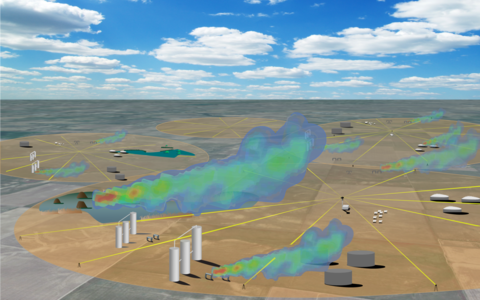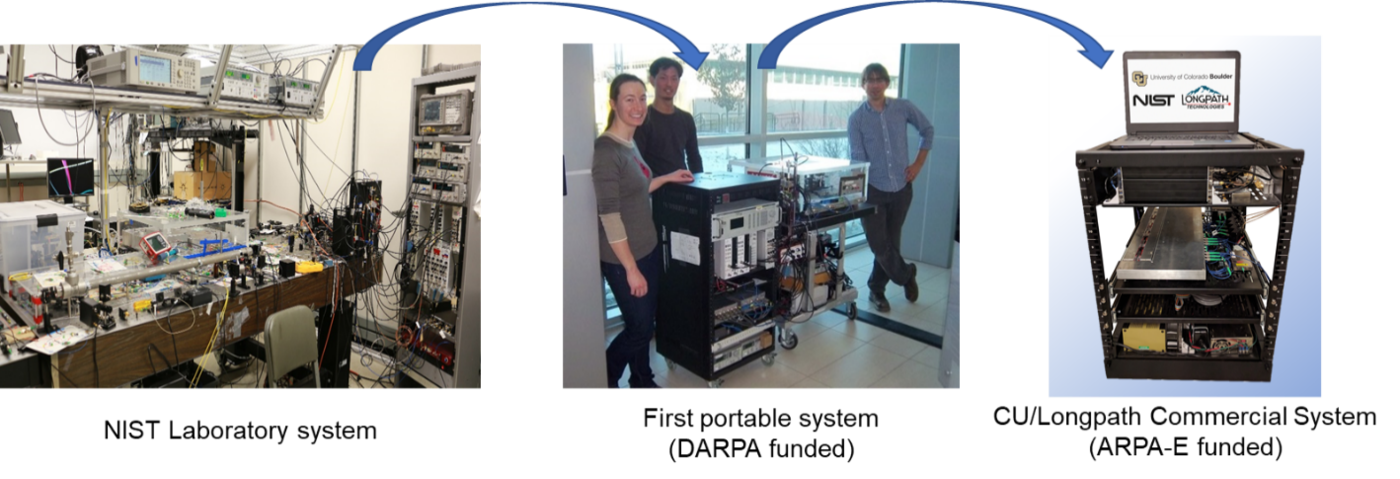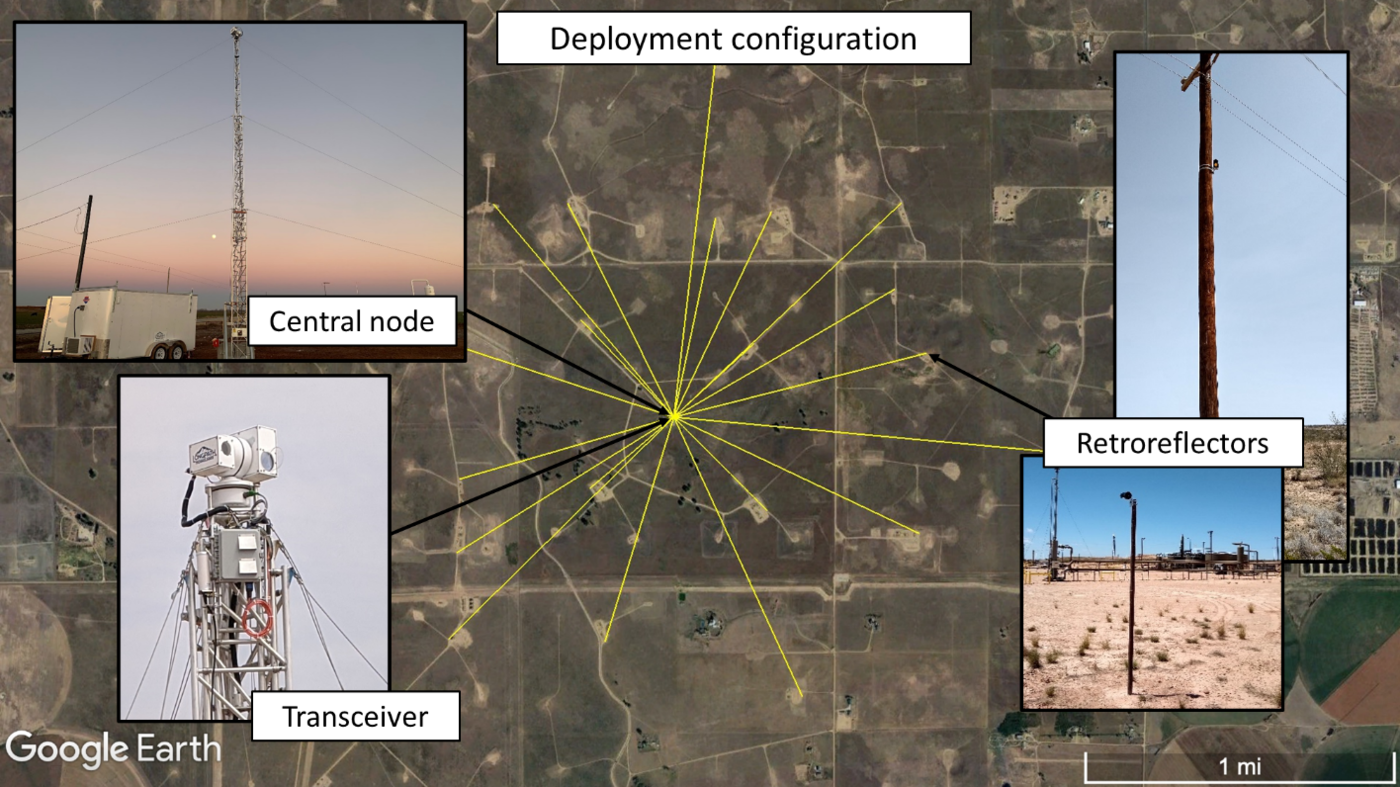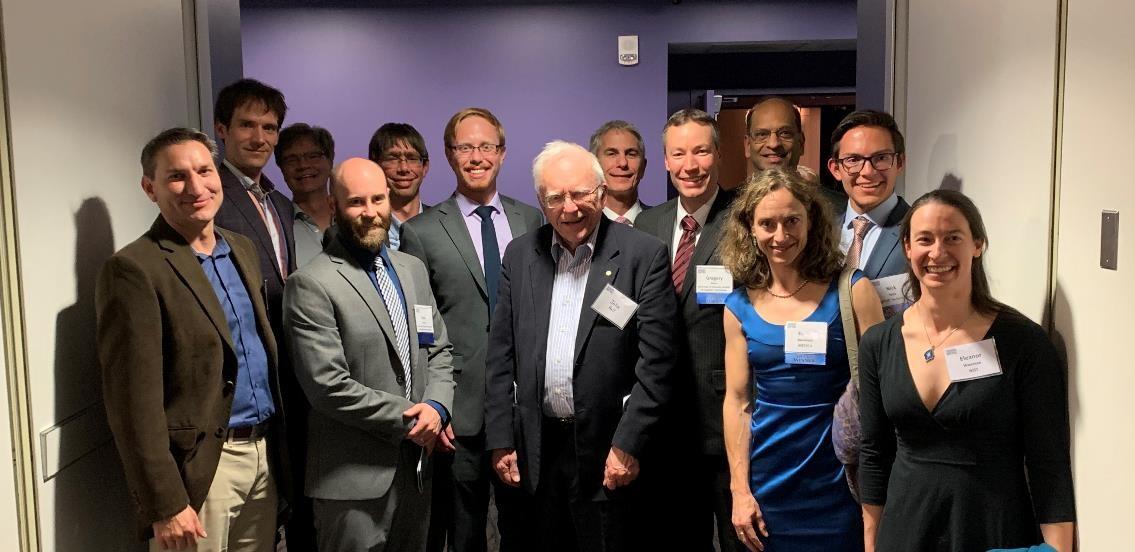Methane leak monitoring and tech transfer

Illustration showing how trace gases are detected in the field using a mobile dual-frequency comb laser spectrometer. The spectrometer sits in the center of a circle which is ringed with retroreflecting mirrors. Laser light from the spectrometer (yellow line) passes through a gas cloud, strikes the retroreflector and is returned directly to its point of origin. The data collected are used to identify leaking trace gases (including methane), as well as leak locations and their emission rates.
Methane is generally considered to be the second most critical greenhouse gas and is estimated to be responsible for approximately half the radiative forcing of CO2. Recently methane has garnered considerable attention in part because of its relatively short atmospheric lifetime compared to CO2 and the observation that a significant reduction in atmospheric methane levels could effectively reduce near-term warming and allow more margin to deal with CO2 emissions. Unfortunately, global methane levels are climbing, and several lines of evidence point to human activities over the industrial era as the source of this increase. In fact, global methane emissions from human activities have reached parity with natural sources.
In the United States one of the most rapidly growing sources of methane emission is the oil and gas sector. Unconventional drilling techniques have spurred significant growth in this industry over the last decade, generating jobs and greatly increasing our energy independence. However, the infrastructure created in this boom does leak natural gas equivalent to a few percent of the total gas produced. Methane is of course the principal component of natural gas and such leaks can have a significant impact on global warming, in addition to negatively impacting efficiency, safety and local air quality.
In 2014 the Fiber Optics Components Group began a partnership with Greg Rieker at the University of Colorado to apply dual-comb spectroscopic techniques, developed at NIST, for cost-effective methane leak detection and quantification. The idea was to leverage the high precision possible with dual-comb spectroscopy to see a small amount of methane enhancement from a long way away. Given the density of oil and gas assets, a single dual-comb spectrometer could monitor many well pads allowing for an affordable cost per well pad while providing continuous monitoring to catch leaks quickly. With funding from the Advanced Research Projects Agency for Energy (ARPA-E) MONITOR program we began to turn the idea into reality, combining the engineering expertise of CU, the laser physics expertise of NIST and micro-meteorological modeling expertise of additional team members from CIRES, NOAA and NIST.
The dual-comb methane spectrometer concept
The first challenge was to move what was a complicated laboratory system into the field. Most frequency combs do not work well outside the laboratory, which limits their application.& In 2004, the Fiber Optics Components Group developed the first optical fiber-based frequency comb. This was a critical step toward developing practical frequency comb technology. It took advantage of the robust, low-cost optical fiber technology that is the backbone of the internet and shifted the wavelength of frequency combs to the infrared where methane and other atmospheric gases absorb light. This work was followed in 2014 by the DARPA funded development of a truly fieldable, vibration insensitive laptop-sized fiber-laser frequency comb at NIST. With support from DARPA, ARPA-E and NIST the Fiber Optics Components Group also leveraged these advances to build the first dual-comb spectrometer that could operate in the field. Shortly after NIST and CU partnered in the first “test flight” of this approach, monitoring combustion in a 16 MW gas turbine. This frequency comb technology was simultaneously transitioned to the University of Colorado Mechanical Engineering Department and ultimately to Longpath Technologies (a company formed as part of the MONITOR program).

The concept of frequency-comb based spectroscopy for methane detection is relatively straightforward. One sends the frequency comb laser light, which contains hundreds of thousands of different wavelengths or “comb teeth”, through an air path containing methane and other gasses. The specific absorption fingerprint, that is, the specific wavelengths that are uniquely absorbed by each methane molecule, can be detected by the disappearance of the absorbed comb teeth. From a sensing standpoint, the laser frequency comb is a fascinating tool because it emits so many wavelengths at once. This means the entire methane fingerprint can be measured with excellent rejection of signal from other molecules such as water. There is a problem, however. One needs to know exactly which comb teeth are absorbed in order to recover the fingerprint. NIST pioneered the technique of dual-comb spectroscopy using two carefully controlled frequency combs to convert the absorption information to radio frequencies where all the information could be recovered with perfect fidelity using many of the same electronics in one’s cell phone.
To detect gas sources from long distances, the dual-comb spectrometer is placed in field sites surrounded by oil and gas operations. A telescope swivels 360 degrees, sending out infrared beams of light from the frequency combs to reflect on small mirrors placed more than a kilometer away distributed among the operations. When the beam of light passes through part of a gas plume blowing through the air, gases in the plume uniquely absorb some of the comb teeth before the light returns to the detector. Fingerprints of methane and other molecules are recovered by fitting the absorption patters to spectral models such as HITRAN. However, once a concentration is retrieved the work is only partly done. To determine leak rated the concentration information is combined with a micro-meteorological model of wind patterns and local surface terrain. The team is then able to precisely pin-point the location and determine the intensity of even the smallest methane leaks from long distance.

As of 2021 Longpath is, as they say, off to the races. While NIST and Longpath maintain a CRADA, Longpath has, for some time now, been charging on its own through the blood, sweat and tears phase of being a start-up company in an emerging market. After multiple successful blind field trials and exploratory industrial deployments, the frequency comb approach to methane detection has been fully validated and is rapidly gaining traction in the oil and gas community. Longpath received their first round of venture funding in 2021 and is deploying systems to the field to multiple oil and gas customers as rapidly as they can be built. While the Longpath’s story in just beginning they have already helped mitigate a CO2 equivalent of over a 40,000 metric tons, and they are almost certainly the best validation to date of NIST’s research on dual-comb technology.

Related News
- Mobile ‘Dual-Comb’ Device Significantly Improves Methane Leak Detection
- The Long Road from Nobelists' Invention to LongPath Technologies
- NIST/CU Team Launches ‘Comb and Copter’ System to Map Atmospheric Gases

